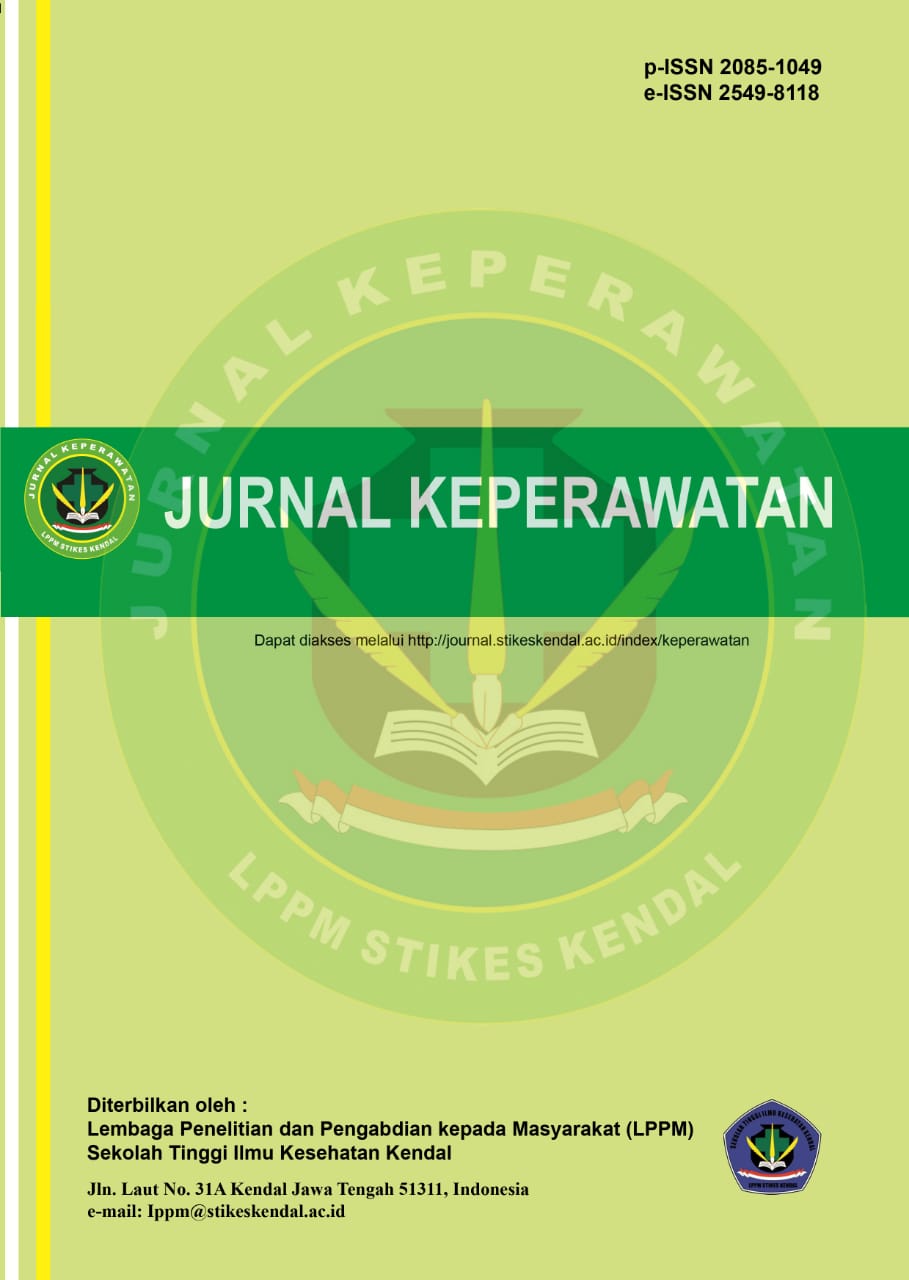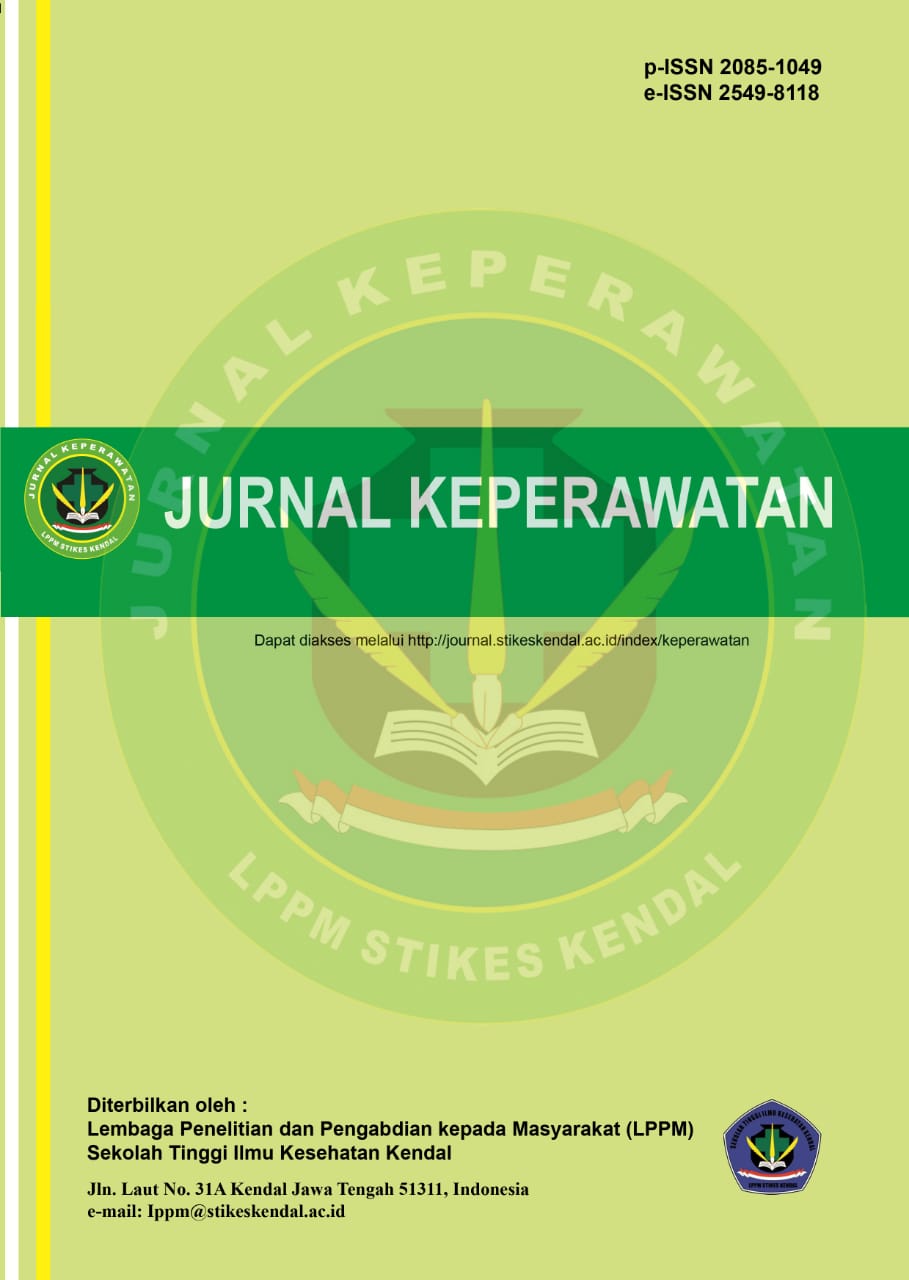Pengaruh Edukasi Video Animasi terhadap Kesiapsiagaan Bencana Gempa Bumi
DOI:
https://doi.org/10.32583/keperawatan.v17i3.2315Keywords:
gempa bumi, kesiapsiagaan, sekolah dasarAbstract
Tingginya korban jiwa pada kejadian gempa menjadi indikasi bahwa masih rendahnya kesiapsiagaan serta kapasitas masyarakat dalam menghadapi gempa bumi. Sekolah dasar (SD) menjadi salah satu sasaran peningkatan kesiapsiagaan. Masih rendahnya tingkat kesiapsiagaan kelompok usia anak menjadi salah satu alasannya. Tujuan dari penelitian ini adalah mengetahui pengaruh edukasi video animasi terhadap kesiapsiagaan bencana gempa bumi di SD Negeri Kasihan, Yogyakarta. Metode penelitian ini adalah metode eksperimen dengan pendekatan pre – experimental design menggunakan pre test post test one group design. Tehnik pengambilan sampel menggunakan tehnik total sampling. Total keseluruhan sampel dalam penelitian ini berjumlah 50 orang.Pengumpulan data menggunakan kuisioner kesiapsiagaan yang dilakukan sebelum dan sesudah edukasi. Hasil uji Wilcoxon didapatkan hasil p-value 0.000, apabila p-value jika dibandingkan dengan taraf signifikansi 5% maka p-value memiliki nilai yang lebih kecil (p-value <0.05). Nilai p-value 0.000 dapat diartikan terdapat pengaruh pemberian edukasi melalui video animasi terhadap kesiapsiagaan bencana gempa bumi di Sekolah Dasar Negeri Kasihan Yogyakarta. Video animiasi mampu memotivasi siswa untuk belajar dan dapat memberikan respon positif sehingga mampu meningkatkan pemahamannya terhadap pembelajaran yang disampaikan
References
Amri, Ansariadi, Amiruddin, Palutturi, Mallongi, Nur, and Sari. 2020. “The Influence of Disaster Counseling with Animation Video on Preparednes Students in Elementary School in Palu.” Medico-Legal Update 20 (1): 1302–6. https://doi.org/10.37506/v20/il/2020/mlu/194482.
Aulady, Mohamad F.N., and Toshio Fujimi. 2019. “Earthquake Loss Estimation of Residential Buildings in Bantul Regency, Indonesia.” Jamba: Journal of Disaster Risk Studies 11 (1): 1–10. https://doi.org/10.4102/jamba.v11i1.756.
Ayub, Syahrial, Kosim Kosim, I Wayan Gunada, and Endang P Handayani. 2020. “Kesadaran Kebencanaan Pada Perilaku Kesiapsiagaan Siswa.” ORBITA: Jurnal Kajian, Inovasi Dan Aplikasi Pendidikan Fisika 6 (2): 267. https://doi.org/10.31764/orbita.v6i2.3026.
Becker, Julia S., Douglas Paton, David M. Johnston, Kevin R. Ronan, and John McClure. 2017. “The Role of Prior Experience in Informing and Motivating Earthquake Preparedness.” International Journal of Disaster Risk Reduction 22 (July 2016): 179–93. https://doi.org/10.1016/j.ijdrr.2017.03.006.
Hodson, Ava, Julia M. Pearce, Richard Amlôt, and M. Brooke Rogers. 2024. “Delivering Extreme Event Preparedness Education in Schools: A Systematic Review of Educational Preparedness Resources Available in England.” International Journal of Disaster Risk Reduction 100 (November 2023): 104171. https://doi.org/10.1016/j.ijdrr.2023.104171.
Johari, Andriana, Syamsuri Hasan, and Maman Rakhman. 2016. “Penerapan Media Video Dan Animasi Pada Materi Memvakum Dan Mengisi Refrigeran Terhadap Hasil Belajar Siswa.” Journal of Mechanical Engineering Education 1 (1): 8. https://doi.org/10.17509/jmee.v1i1.3731.
Kharisna, Dendy, Wardah Wardah, Delviana Safitri, Devi Andriyani, Siti Masyita, Linda Erica, and White Asmara Gulo. 2023. “Peningkatan Kesiapsiagaan Siswa Sekolah Dasar Dalam Menghadapi Bencana Gempa Bumi Dan Kebakaran.” Jurnal Abdimas BSI: Jurnal Pengabdian Kepada Masyarakat 6 (2): 191–98. https://doi.org/10.31294/jabdimas.v6i2.14882.
Komaro, Mumu, Ariyano Ariyano, A. Suherman, and G. F. Geovani. 2018. “Problem Solving in Phase Diagram of Engineering Material Subject through Animation as Learning Media.” MATEC Web of Conferences 197: 1–3. https://doi.org/10.1051/matecconf/201819712008.
Purnama, Sang Gede. 2017. “Modul Manajemen Bencana.” Fakultas Kedokteran Universitas Udayana, 1–89.
Rahmawan, Ardianto B., Gabriela Eliana, Latif A. Habibi, and Alyca A. Nariswari. 2023. “A Comparative Study of Earthquake Disaster Management Laws between USA and Indonesia.” Jamba: Journal of Disaster Risk Studies 16 (1): 1–12. https://doi.org/10.4102/JAMBA.V16I1.1582.
Schmidt, Joshua. 2018. “Notes on National Earthquake Education Programs in Israel.” Procedia Engineering 212: 1265–72. https://doi.org/10.1016/j.proeng.2018.01.163.
Sujarwo, Noorhamdani, and Mukhamad Fathoni. 2018. “Disaster Risk Reduction in Schools: The Relationship of Knowledge and Attitudes towards Preparedness from Elementary School Students in School-Based Disaster Preparedness in the Mentawai Islands, Indonesia.” Prehospital and Disaster Medicine 33 (6): 581–86. https://doi.org/10.1017/S1049023X18000778.
The National Agency for Disaster Countermeasure. 2016. “Disasters Risk of Indonesia.” International Journal of Disaster Risk Science, 22. https://doi.org/10.1007/s13753-018-0186-5
Wang, Liang, Gao, Li, Chen, Yifen, Rongmei, Haini, and Xianqiong. 2023. “Earthquake Disaster Preparedness Training Programme for Hearing-Impaired Children: A Randomized Quasi-Experimental Trial.” International Journal of Disaster Risk Reduction 92.
Wang, and Tsai. 2021. “Factors Affecting Elementary and Junior High School Teachers’ Behavioral Intentions to School Disaster Preparedness Based on the Theory of Planned Behaviore.” International Journal of Disaster Risk Reduction.
Yildiz, Ayse, Richard Teeuw, Julie Dickinson, and Jessica Roberts. 2020. “Children’s Earthquake Preparedness and Risk Perception: A Comparative Study of Two Cities in Turkey, Using a Modified PRISM Approach.” International Journal of Disaster Risk Reduction 49 (May): 101666. https://doi.org/10.1016/j.ijdrr.2020.101666.
Zidan, Fikri M., Kamal Idris, and Arif Alper Cevik. 2023. “Prehospital Management of Earthquake Crush Injuries: A Collective Review.” Turkish Journal of Emergency Medicine 23 (4): 199–210. https://doi.org/10.4103/tjem.tjem_201_23.
Downloads
Published
How to Cite
Issue
Section
License
Copyright (c) 2025 Jurnal Keperawatan

This work is licensed under a Creative Commons Attribution-NonCommercial-NoDerivatives 4.0 International License.




